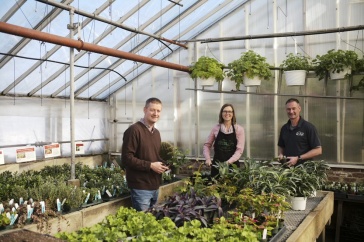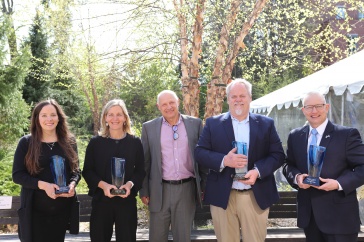
Nonprofit organizations that lack the capacity and expertise to conduct complex evaluations struggle to capture and communicate the impacts of their programs and initiatives. Yet, without data to demonstrate how their work led to changes in behavior and ultimately improved social, economic or environmental conditions for the intended audience, it can be a challenge to secure financial support. The first thing that any funding agency, donor or stakeholder wants to know is how effectively an organization’s dollars are spent. In other words, “What is the return on investment?”
That is why a group of Extension specialists from the universities of Washington, Idaho and North Dakota developed Ripple Effect Mapping (REM). REM is a participatory group method that engages program participants and stakeholders to study and visually map results, and it doesn’t require the expertise, resources or time required by more complex evaluation tools.
REM was first used in 2007 to analyze the impact of Horizons, an 18-month community-based effort to strengthen leadership and reduce poverty. The collected results demonstrated that the Horizons Program indeed helped rural communities capitalize on economic opportunities and remove barriers that prevented some individuals from improving their livelihood.
The REM approach was first used by UNH Cooperative Extension in 2015 to identify the outcomes that the organization’s programs have had on improving the lives of people in New Hampshire from the perspective of partner agencies and organizations. As a result of the process, we learned about two perceived strengths: the organization’s strong positive reputation as a convener of diverse stakeholders around challenging issues and as a neutral source for widely respected and trusted expertise. Learning these perceptions helped inform our new strategic plan.
As a result of the process, Cooperative Extension learned about two perceived strengths, which helped inform their new strategic plan: the organization’s strong positive reputation as a convener of diverse stakeholders around challenging issues and as a neutral source for widely respected and trusted expertise.
REM is helping other organizations across the state, as well. One is Leadership New Hampshire (LNH), which mobilizes existing and emerging leaders to catalyze positive change in their communities and across the state. Each year, a cohort of about 35 talented and accomplished individuals are accepted into the program and provided with opportunities to learn about the complex issues facing New Hampshire. The goal is for participants to connect with one another, leverage each other’s strengths and ultimately serve in local and state positions of leadership and responsibility.
To help improve their evaluation capacity, LNH invited UNH Cooperative Extension to pilot REM to help better understand their program's impacts. They are just embarking on this process, with active participation by members of the LNH board of directors.
Stephen Reno, former University of New Hampshire System chancellor and current executive director of LNH, knows it's important that the organization and its stakeholders better understand the range of impacts that LNH’s 900 graduates have had on their respective communities and the state.
“LNH graduates become members of a vast network of people who want to make positive change in the state, and they gain awareness of the state’s deep challenges and opportunities,” he says. “We want to know just how this leads to real change around these issues.”

During Fall 2015, Scott Chazdon, an evaluation specialist from the University of Minnesota, and I joined Ricardo Romero in Panama to implement REM to help Sustainable Harvest International (SHI) evaluate the impacts of its agricultural development work in two rural Panamanian communities. SHI, which has worked in Central America since 1997, provides education and outreach to help rural farming families thrive in a manner that also stewards the environment.
The purpose of the REM exercise was to determine whether SHI’s work actually leads to the aforementioned outcomes. The results demonstrated that SHI’s work indeed leads to greater economic independence by farmers, personal empowerment (particularly for the female heads of household) and greater food security by rural farming families who participate in the program. This was the first documented case in which REM was used in an international context. The results will be published in a forthcoming book on rural development in Latin America.
This approach to evaluating impact proves that innovation can come from simply finding ways to make tools more accessible and usable to more people. Look for more reports and uses of Ripple Effect Mapping by UNH Cooperative Extension this coming year.
-
Written By:
Charlie French, Ph.D. | UNH Cooperative Extension | charlie.french@unh.edu | 603-862-0316


















































